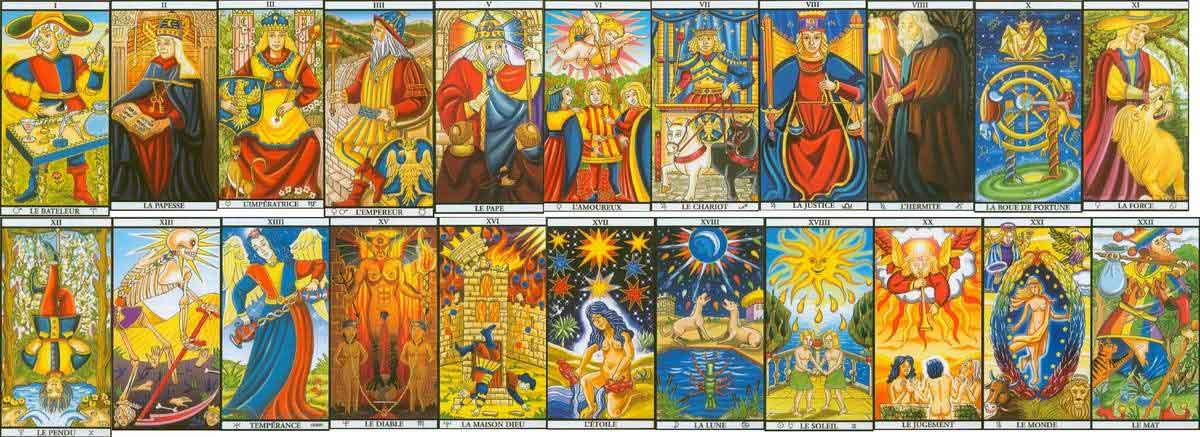What is the tarot?
The Tarot cards are also called arcana, from the Latin arcanum (the secret, the mystery, the occult and the enigma) this word evokes their divinatory character. The arcana of the tarot are also called triumphs word that today is no longer used. According to some esoteric doctrines, each blade is a symbol of the universe and a triumph over chaos.

Towards the end of the 15th century, the predominant maps are those of the Tarot of Marseille. During the nineteenth century there is a real break in the field of Tarot and occultism. There appears an immense curiosity for all that is new and strange, which will take extension until our days.
The major blades are 22, they are all numbered, with the exception of the Fool which eventually carries the number zero. He represents the joker. It would be more accurate to say that he gave birth to the joker of the current games.
The cups would represent the clergy, the swords the nobility, the pentacles the merchants, the wands the peasants. A treaty published in Venice in 1545 stipulates that the swords are death (of those who ruin themselves playing), the wands the punishment (promised to cheat), the money that feeds the game, and the cups the toast carried in winner’s honor or at the end of a game.
Note however that in France, at a given moment, the colors change to become: the heart (cuts), the tile (deniers), the clover (sticks) and the spades (swords). That’s how the current playing card game consisted of 52 cards, 13 per color and 2 jokers.

All the texts, from the end of the 18th century to the present day, agree on one point: there is an analogy between the 22 blades of the Tarot and the 22 letters of the Kabbalistic alphabet, (or sacred alphabet)
The tarot is a tool of growth and personal transformation linking the past, the present and the future. It is a sacred tool of divination for cartomanciers and for all those who use it for clairvoyance.
Personally from my personal experience I am always impressed with the way cards always give the right messages, yes, the cards are there to help us evolve and show us our strengths and weaknesses and what we need to work on to succeed in to be happy and bloom!
Contrary to popular belief, cards take us back to the past and present to help us make the right choices for our future to be better.

Yes, because before incarnating on earth we have made contracts with other souls (people) for the purpose of mutual evolution (not always pleasant, lol) so these encounters will inevitably be found in the cards!
Cartomancy is my passion, it took me some time to discover it, at first it was difficult because each card has at least twenty different meanings, depending on where they are positioned and according to the cards that surrounds them.
